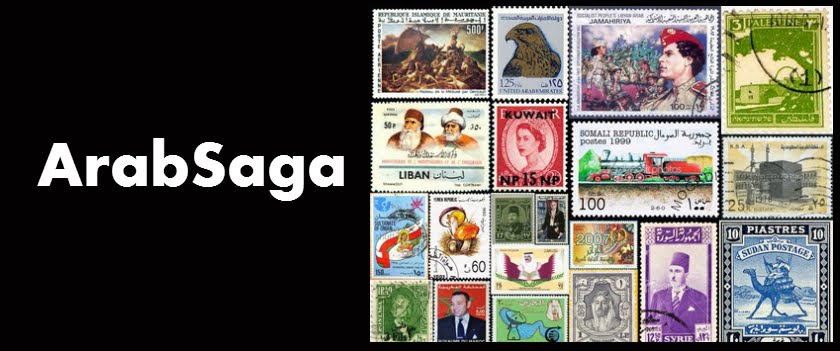 |
| U.S. and Iran footballers: A lesson for politicians? |
Saudi foreign policy has to grapple with two key
problems à propos
change in the region and the world order.
One is Iran, which is not exactly a new problem. The
other is the Obama Administration forging ahead with its strategic pivot from
the Middle East to East Asia.
Saudi academician and writer Khalid
al-Dakheel, in his weekly column today for the
Saudi-owned pan-Arab daily al-Hayat,
believes the two problems have taken new dimensions.
He
explains:
After gaining a foothold in Bilad al-Sham through its
alliance with the Syrian regime, Iran proceeded to plant Hezbollah as its military
arm in Lebanon.
Ironically, this was done under the smokescreen of
“resistance” (to Israel) and a Saudi-Syrian “understanding” on Lebanon.
Having then bagged Iraq from U.S. occupation forces and
enthroned its surrogates in Baghdad, Iran is now out defending the Syrian
regime and striving to be the paramount power in the Gulf as a step to expand
its influence throughout the Arab
Mashreq.
Iran’s aim is to be the nation-state of the region’s
Shiites and to be recognized as such by Washington.
To realize this dream, after ensnaring Syria and
Iraq, Iran has to face the bigger challenge posed by Saudi Arabia and Egypt –
more so Saudi Arabia because it is the Gulf’s richest country, sits on Iraq’s
doorstep and is home to Islam’s two holiest mosques (al-Masjid al-Haram in
Mecca and al-Masjid al-Nabawi in Medina).
Iran is aware that undermining Saudi Arabia is a tall
order: the ethnic, sectarian and historical impediments are simply formidable
and countless. That’s why Tehran chose instead to surround the kingdom with Iranian
clients and hotbeds of unrest – northward in Iraq, southward in Yemen and
eastward in Bahrain and Kuwait.
Egypt is as impregnable as Saudi Arabia, except that Egypt
lies further away geographically and is currently beset with political and
economic problems. This explains why Iran is trying to lure Egypt away from the
Gulf with promises of financial aid and a collaborative solution for Syria.
With the Syrian regime now on its last legs, Iran can
recognize the expiry of its sell by date, cut its losses and facilitate the
transfer of power in Damascus. Or, it can continue backing the regime at the
price of walking away with no more than a piece of a fragmented Syria.
Iran’s predicament is also the region’s. Therein lies
the future significance of Saudi foreign policy and Washington’s pivoting
from the Middle East to the Asia-Pacific region.
President Barack Obama’s pivot toward the
Asia-Pacific region is all about China.
While the U.S. was off fighting its wars in
Afghanistan and Iraq, China’s amazing growth and the promise of its huge and
expanding market turned the Asia-Pacific region into the global economy’s
center of gravity.
A report last November by the Organization for
Economic Cooperation and Development (OECD) expects the United States to cede
its place as the world’s largest economy to China as early as 2016.
Washington is equally concerned by China more than
doubling its declared military spending from 2006 to 2012, roughly in keeping
with economic growth.
There are two unmistakable signs Obama is forging
ahead with steps to pivot U.S. foreign policy from the Middle East to Asia.
One is his perseverance in “leading from behind” on
Syria. The other is keeping his “extended hand” to Iran.
Zbigniew
Brzezinski, who served as U.S. National Security Advisor under President Jimmy
Carter, says the U.S. can deter and contain a nuclear Iran, such as it is still
deterring North Korea from using its nuclear weapons against South Korea and
Japan.
Also,
confirmation of Chuck Hagel, Obama’s pick for defense secretary, remains
blocked because he is soft on Iran and previously called for talks between
Washington and Tehran without preconditions.
It
seems America’s strategic shift to Southeast Asia, the accumulation of Arab
crises and the Arab’s impotence in solving albeit one of them are pushing many
Americans to support a political deal with Iran.
Strangely,
all U.S. talk of such an understanding with Tehran makes no mention of Saudi
Arabia.
So
how would Saudi Arabia react? Could it face such an eventuality with its same
old foreign policy tools and premises?
Saudi
foreign policy needs to update its perceptions and tools to match up with America’s
strategic rebalancing, Iran’s agenda and the current winds thrashing the Arab
world, not to mention the sea changes in Saudi society, the region and the
world order.
Can
the foreign policy adopted at the height of the Cold War by King Saud and King
Faisal, God bless their souls, remain unchanged after 50 years?
Clearly,
the policy that failed in Iraq and Syria, was half-successful in Yemen and Bahrain
and missed setting up stable and enduring alliances in the region needs
reappraisal and revision.
